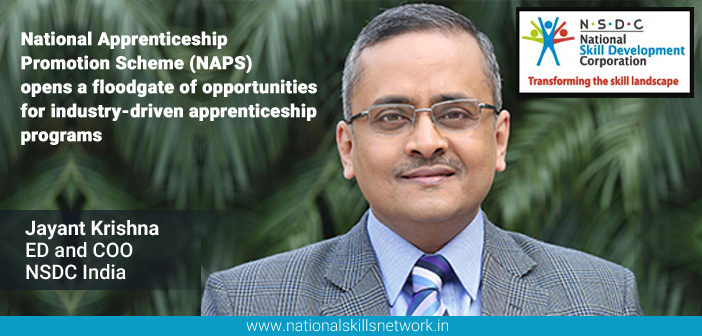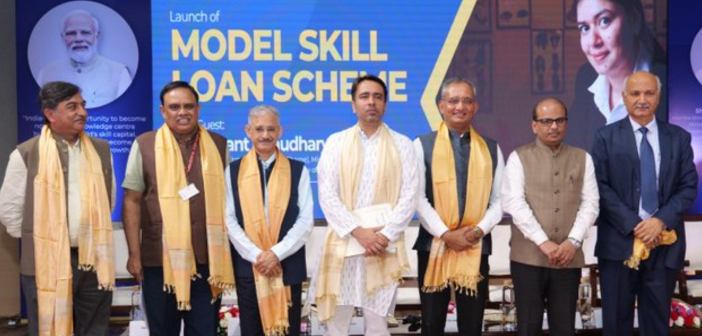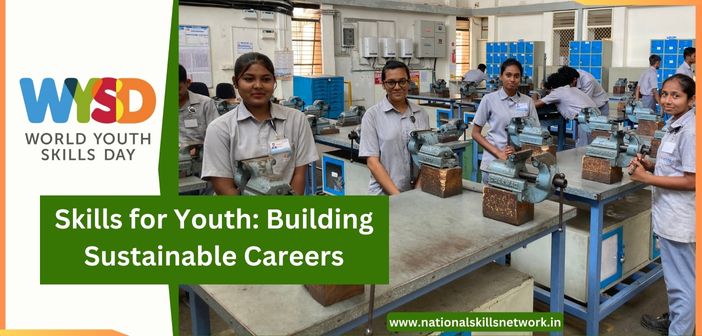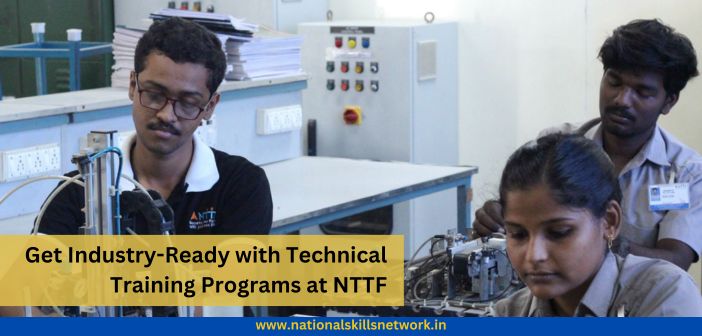National Skills Network – NSN is privileged to present an interview with Jayant Krishna, Executive Director and Chief Operating Officer, National Skill Development Corporation (NSDC). In this Skill Talk, Mr. Krishna shares the significance of promoting apprenticeships in India by highlighting the key reforms to the previous outdated Act and how National Apprenticeship Promotion Scheme (NAPS) is designed to make it industry-friendly and inclusive. Let’s read on to know more about the incentives for engaging apprentices, particularly in the MSME sector and the efforts to make a positive impact through Skill India mission.
 Till recently, India has been languishing at about 2.8 lakh apprentices per annum. Such low adoption rate is attributed to the fact that apprenticeships were constrained by obsolete laws and the industry did not perceive it as friendly. About 5 years ago, efforts towards reforming this law were started when the subject was under the Ministry of Labour. Advisor to the Prime Minister (APM) on Skills and CII took lead in this.
Till recently, India has been languishing at about 2.8 lakh apprentices per annum. Such low adoption rate is attributed to the fact that apprenticeships were constrained by obsolete laws and the industry did not perceive it as friendly. About 5 years ago, efforts towards reforming this law were started when the subject was under the Ministry of Labour. Advisor to the Prime Minister (APM) on Skills and CII took lead in this.
I had an opportunity to champion the reforms from the industry side working closely with industry representatives and the Government of India. We discussed with over 200 industrial organizations of different kinds – large, medium, small and micro – to find out their pain areas and create a wish-list for a good apprenticeship regime if they were to embrace apprenticeships wholeheartedly. The efforts of APM and CII contributed to the larger vision and formed the basis for making industry-relevant recommendations that were included in the reforms enacted in December 2014. Let me highlight some of the critical changes:
- Earlier, the scope of apprenticeship largely covered only the manufacturing industry but now it is explicitly extended to cover the service industry as well. As we are aware, today more jobs are created in the services sector, and hence there are opportunities to engage apprentices in Tourism and Hospitality, BFSI, Retail, Media and Entertainment, Beauty & Wellness, Healthcare, IT-ITeS and so on.
- Apprenticeship was earlier largely confined to ITI students but now scope has been formally extended to all other types of graduates and other skilled or unskilled people including certificate-holders of short term programs like PMKVY.
- Stipend is improved by linking it to the minimum wage of semi-skilled workers notified by the respective State or Union territory. The apprentices will get 70% of the minimum wages in the first year, 80% in the second year and 90% in the third and fourth year.
- The new Apprenticeship reforms have done away with the quota system where Apprenticeship targets were given to the industry which used to vary from unit to unit, depending on the facilities and training resources that they have like the machinery, equipment, training capacity, trainers depending on how much was required for captive production and how much they can share for apprenticeships. Tradewise targets for apprentices were decided on the basis of this process. Now, every enterprise or unit can have a minimum of 2.5% of its employees as apprentices at any point of time with a maximum of 10%.

- Besides, earlier, the Government had enlisted 259 designated trades under which apprenticeships could take place. Now, realizing the need for the curriculum to change with the changes in technology and business, industries are also encouraged to have apprenticeship under “Optional Trade” category. The industry can decide their optional trade categories and certify that apprenticeship was completed. They need government approval only if they wish to offer NCVT certification.
- Many MSME units felt constrained in offering Basic Training; they had the infrastructure to offer technical training, however they did not have classrooms for Basic courses. Basic Training is mandatory for apprentices who enroll as freshers and do not have any formal skilling certification. Basic Training can now be totally sub-contracted, if need be. In addition, MSMEs can now deliver Practical Training across 3 units if one organization does not have specific machines and tools to deliver the entire Practical Training at one place. This is another example of how the norms have been relaxed to support MSMEs to engage apprentices.
- At this point, let me clarify that NAPS is not implemented by NSDC but it comes under the purview of the Director General of Training in the Ministry of Skill Development and Entrepreneurship (MSDE). However, MSDE and NSDC have decided to extend apprenticeship opportunities to the PMKVY for eligibility to join as apprentices after short term training courses where they would get waiver for Basic Training under apprenticeship.
Apprenticeships open a flood gate of opportunities and it is a win-win-win situation for all – it’s a win for the industry / corporate sector which will have apprentices on board, for the candidates because they learn by doing things in real workplace and a win for the country and the economy. But all stakeholders have to work as partners in ensuring its smooth implementation. Even though some of the PSUs and the large private sector companies lead in embracing apprenticeships, we have a long way to go in meeting the needs of the country through service sector, MSME units and other players in the industry. .
Need for sustained advocacy and outreach programs
Though apprenticeship reforms are quite industry-friendly, the industry still does not know much about these changes . The industry-friendly reforms need outreach interventions from the government and industry associations to spread the words about these sweeping reforms, as well as incentives and benefits.
Plans to cover informal apprenticeships
That is a difficult space to intrude upon. Every training cannot be under NAPS, so informal apprenticeships such as Guru-Sishya Parampara, or Ustaad-chela models have to continue, the way they are. They have not been brought under the Apprenticeship Act so far.
Strategy for promoting apprenticeships in India
Lot of advocacy is required. When skilling itself is not considered to be aspirational in the country, the challenge is to convey the message that apprenticeships are good for the industry, the candidate and the society at large.
We need several programs for rural outreach, mass media communication, and brand ambassador endorsements, not only apprenticeships, but also for the overall skills space.
Learning from best practices from other countries, particularly from the German Dual System, we can make our Apprenticeships come close to their model.
In Germany after 10th class, young adults enter the industry where they spend a day in classroom training followed by shop floor training for 4 days a week. And, this program goes on for up to 3 years mostly in the manufacturing sector. In the coming years, we will see at least a couple of million people getting trained every year under the Apprenticeship Scheme in India. We can try using the international best practices to come close to the German or Swiss Dual System of VET.














I am a b.tech mechanical engineering student.I Want do training 2 years.so you provide the application details.
DEAR SIR,
We want to start ONE Year Apprenticeship Training Scheme for ITI candidates who are completed Two years successfully, its possible in Facility Management Services, if yes Please provide the details.